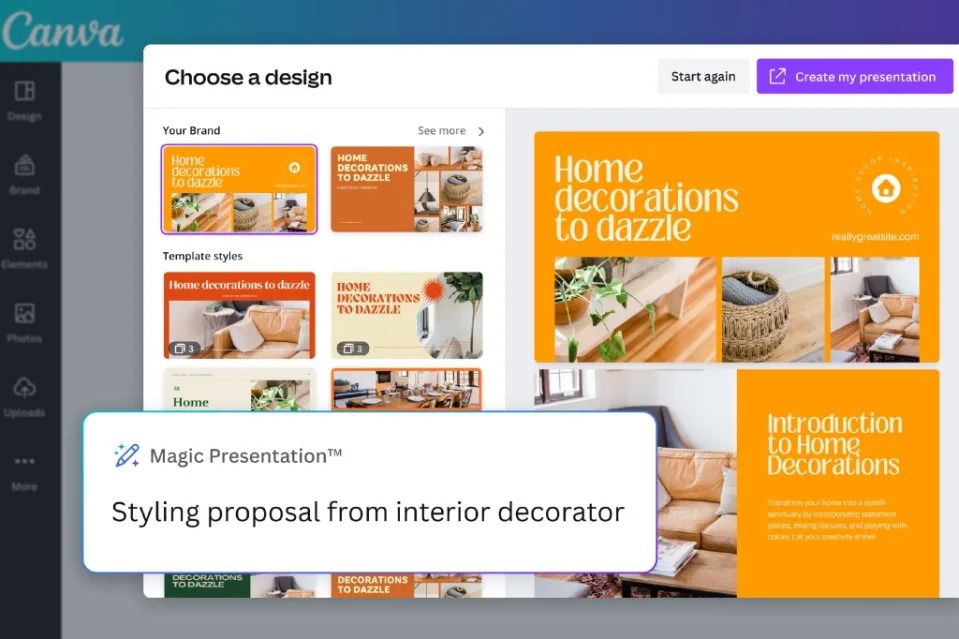Canva CEO Melanie Perkins enters the A.I. race in her own way
Melanie Perkins has always operated on her own timeline. She founded Canva, the $26-billion visual communications company, with a decade-long vision to challenge every element of digital publishing. So as tech companies recently started debuting new A.I. tools like OpenAI’s ChatGPT and Microsoft’s Bing Chat, she paid close attention – but was not in any rush.
Yesterday, Canva introduced its own A.I. tools, a suite of features that let the 120 million users of its design products add A.I.-generated elements to what they create. Users who are building presentations, creating social media content, or writing documents can ask Canva to take the first stab at drafting that content. For example, given a prompt like “styling proposal from interior decorator,” Canva’s A.I. will spit out a detailed interior decorating presentation. The tool, while not perfect, is supposed to give users a head start.

Perkins, whom I profiled last year, tends to keep her blinders on at Canva’s headquarters in Sydney, Australia, and avoid dwelling too much on what competitors are up to (at least publicly). But with a goal to make Canva one of the world’s top-tier tech companies—it’s already the most valuable female-founded and -led startup—she’s certainly paying attention.
“What’s been extraordinarily exciting to see is the pace of change in technology,” she told me before this product launch. “What’s really exciting is how rapidly technology is advancing. It really supercharges what we set out to do 10 years ago.”
Unlike some of its competitors, Canva avoids marketing its technology using the buzzword “A.I.” The startup instead has branded its new suite of tools with the word “magic,” a choice that fits with the platform’s effort to make its features seem user-friendly and accessible. “We believe what our customers really want is magic, versus the tech ecosystem that talks a lot about…” she says, trailing off.
As a business, Canva has set its sights on the enterprise market with the goal to become the next Microsoft or Adobe. The company is still a long way from achieving that milestone, with about $1 billion in annual revenue. But its A.I. debut builds on last fall’s launch of its visual worksuite of enterprise products that compete against tools like Google Docs and PowerPoint.

Canva’s features for brands are geared toward design-minded staffers in large organizations that follow meticulous brand guidelines. The new tools let users fix problems, like automatically replacing an old logo with a new one everywhere it appears within Canva’s ecosystem.
Perkins is known for setting a top priority every year—rework the code base, go international, launch A.I. The launch of the visual worksuite and A.I. products in a single six-month span checked two major ideas off her to-do list. She’s reluctant to say what her next priority is. “We’re going to continue to do what we’ve always been doing, which is to enable people to take their ideas and turn them into design and do that seamlessly and magically,” she says.




